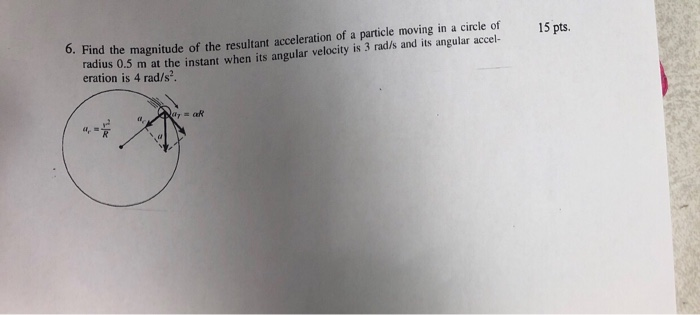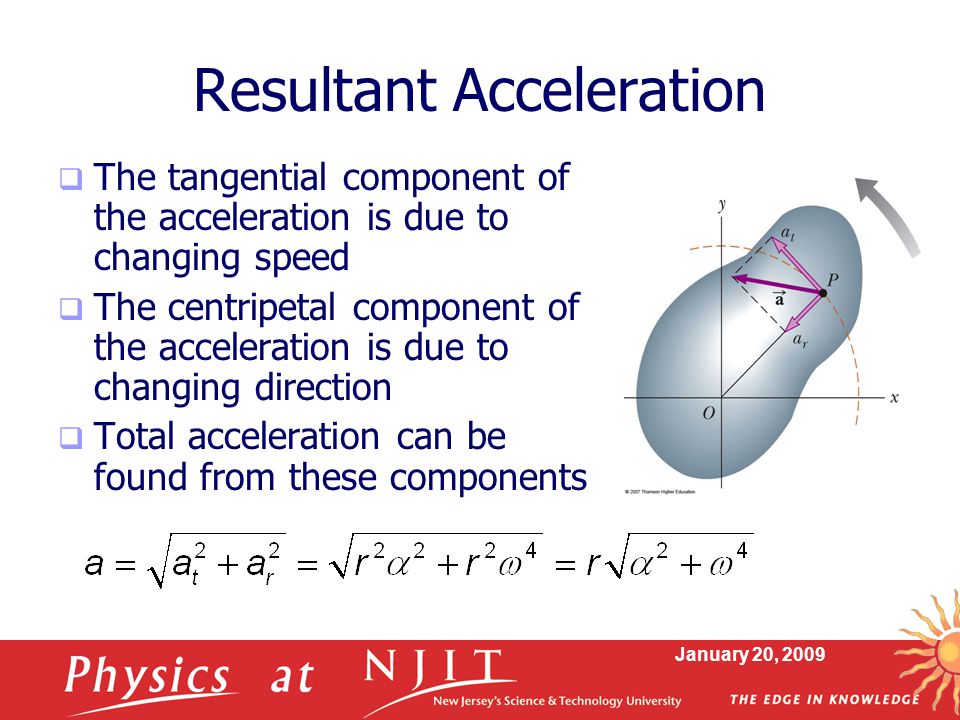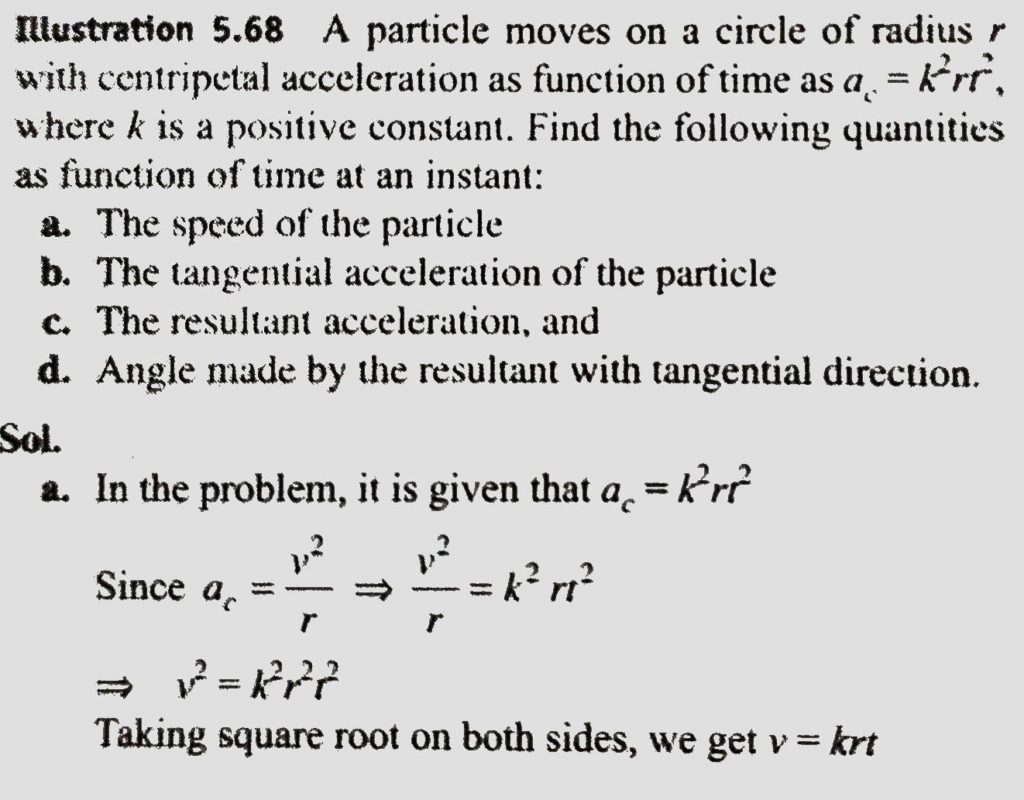Resultant Acceleration Of A Particle
In the figure the variations of componets of acceleration of particles of mass 1kg is shown wrt. Now it is given that F2 and F3 are perpendicular to each other.

Magnitude Of The Resultant Acceleration Of A Particle Chegg Com
Find the resultant acceleration of a particle moving in a circle of radius 10 cm at the instant when its angular velocity is 6 rads and its angular acceleration is 20 rads2.

Resultant acceleration of a particle. Watch Video in App. In circular motion assuming v w r obtain an expression for the resultant acceleration of a particle in terms of tangential and radial component. Represent resultant acceleration of a particle executing non-uniform circular motion by means of vector diagram.
2 r a d s. How do you calculate resultant force. A particle will have an acceleration proportional to the magnitude of the resultant force acting on it and in the direction of the resultant force.
In Circular Motion Assuming V W R Obtain an Expression for the Resultant Acceleration of a Particle in Terms of Tangential and Radial Component. Assume the particle contacts only one side of the slot at any instant. The initial velocity of the particle is vecu-3 h.
30. Find the resultant acceleration of a particle moving in a circle of radius 10 cm at the instant when its angular velocity is 6 rads and its angular acceleration is 20 rads2. When forces F1 F2 and F3 are acting on the particle it remains in equilibrium.
Join the 2 Crores Student community now. So we can infer that force F1 has to balance the resultant of the other two forces. Newtons second law.
When forces f1 f2 and f3 are acting on a particle. Represent resultant acceleration of a particle executing non-uniform circular motion by means of vector diagram. The resultant of the forces acting on a particle is equal to the rate of change of linear momentum of the particle.
Determine the force of the rod on the particle and the normal force of the slot on the particle when. The rod is rotating with a constant angular velocity. Watch 1 minute video.
Write down the expression for angle made by resultant acceleration and radius vector in the non-uniform circular motion. To keep watching this video solution for FREE Download our App. 1 See answer rahulshahi2247 is waiting for your help.

If The Angle Between Tangential Acceleration And Resultant Acceleration In Non U C M Is Alpha Then Direction Of The Resultant Acceleration Will Be

If The Angle Between Tangential Acceleration And Resultant Acceleration In Non Ucm Is A Then Direction Of The Resultant Acceleration Will Be

Newton S Laws S4 Physics Revision

4 What Is The Magnitude Of The Resultant Chegg Com

Finding Resultant Force From 2 Forces At 0 To 90 Degree Physics And Mathematics 90 Degrees Physics

A Particle Moves On A Circle Of Radius R With Centripetal Acceleration As Function Of Time As Youtube

A Particle Moves On A Circle Of Radius R With Centripetal Acceleration As Function Of Time As A C K 2 R T 2 Where K Is A Positive Constant Find The Following Quantities

Thechalkface Net Essentials Revision Cards For A Level Maths In 2021 Math Notes Maths A Level Math

Physics Class 9 10 Centripetal Force Centripetal Force Ch 7 Circularm In 2021 Centripetal Force Physics Constant Speed

Pin By A Hamizan On Fizik Dan Sains Gcse Physics Physics Physics Lessons

Find The Angle That The Resultant Acceleration Makes With The Tangential Acceleration

Physics 106 Mechanics Lecture Ppt Download

Resultant Force Time Graph Link To Speed Time Graph Learn Physics Physics Classroom Physics Notes

Why Is The Centripetal Net Force Always To The Center Physics Stack Exchange

Pin On Mcat Practice Questions

A Particle Moves On A Circle Of Radius R With Centripetal Acceleration As Function Of Time As A C K 2 R T 2 Where K Is A Positive Constant Find The Following Quantities

Constant Acceleration Equations Acceleration Equation Equations Acceleration

A Particle Moves On A Circle Of Radius R With Centripetal Acceleration As Function Of Time As A C K 2 R T 2 Where K Is A Positive Constant Find The Following Quantities

Vector Diagram Parallelogram Method For 4 Different Kinds Of Questions Learn Physics Physics Formulas Physics Notes
Posting Komentar untuk "Resultant Acceleration Of A Particle"